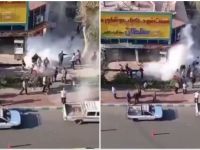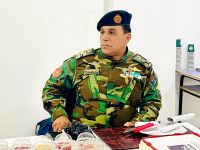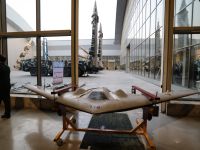Some 200 Lebanese forced their entry Sunday into the disputed Shebaa farms area in the first protest march since the region was occupied by Israel in 1967, an AFP correspondent saw.
A group of men opened the gate leading to Bastara farm, in the occupied region of Shebaa, allowing in a flow of cars and other vehicles carrying men, women and children, he said.
They drove some three kilometers (two miles) before stopping few yards away from sand barricades behind which were standing about 50 Israeli soldiers backed by two Merkava tanks and four military jeeps, he said.
The protestors held banners reading: "The Shebaa farms are Lebanese."
MP Qassem Hashem, a Shebaa native and a member of the Lebanese branch of the Arab Baath party ruling in neighboring Syria, told reporters the march was meant to protest the "continued occupation of our lands in Shebaa."
"With the sacrifices of our resistance, the Shebaa farms will return to the nation," he said.
The crowd was also met from the other side by Fatima Zahra, who along with her father is the only Lebanese to still reside in Bastara under the occupation.
"We are happy to see you, we miss you," shouted the woman sitting on a mule while wiping out tears from her cheeks.
After a few minutes, the protestors returned back peacefully along the road leading out of the occupied zone.
Although Lebanon has now accepted that Israel's May 24 pullback from the south has gone back to the "blue line" drawn by the United Nations, it still has outstanding border disputes with Israel, including the Shebaa farms on the foothills of Mount Hermon and at the convergence of the Lebanese, Israeli and Syrian borders.
Israel says it captured the Shebaa farms, some 25 square kilometers (10 square miles), from Syria in the war of June 1967, in which Lebanon was not involved, and that their future will be decided in talks with Damascus.
Lebanon, backed by Syria, says the region is on Lebanese soil -- BASTARA, Lebanon (AFP)
© 2000 Al Bawaba (www.albawaba.com)







